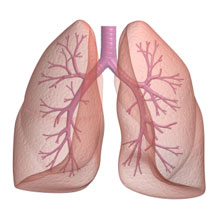Its an important entity for us to know. It is a known cause of Rhabdomyolysis and hence AKI and also causes lactic acidosis. PRIS is a rare but fatal syndrome described in adults and children who get high dose propofol infusion(usually for CNS injury sedation or alcoholics). Usually >48 hours of infusion of 5mg/kg or higher.
Classic features: Rhabdomyolysis, hyperkalemia, hypocalcemia, elevated troponin, severe metabolic lactic acidosis, renal injury, high Triglycerides and features of SIRS without other real findings of Sepsis. Usually these patients are neurological injuries and getting catecholamines as well or steroids. Tmax could be very high in such cases sometimes in 106-107F range. Cardiac features can include Bradycardia, hypotension, PEA, VT, Atrial Fibrillation and SVTs. Some of the cases described have been with concurrent severe infection as well. What happens at cellular level- this drug impairs free fatty acid utilization and mitochondrial activity leading to these findings?
In summary: Steroids, catecholamines and propofol alter energy production alter the SIRS and MODS syndrome and that leads to worsening rhabdomyolysis and cardiac failure that then leads to metabolic acidosis and acute renal injury. Cerebral Microdialysis can monitor brain energy related metabolites including lactate and pyruvate during head injury. The cerebral lactate to pyruvate ratio is increased in PRIS. One way to monitor this syndrome.
Some people think that the term PRIS might be misleading and really it is a pathophysiologic state. Critical illness of any kind is the priming factor and the propofol along with steroids or pressors can be triggering factors. So really the name critical illness cardiac, renal failure and rhabdomyolysis associated with high dose propofol, steroids or pressors seems more appropriate.
In such cases where this risk is high, best is to use a different agent for sedation and remove propofol from the culprit.
Ref:


 An upcoming sub specialty in nephrology is "onco" nephrology. It is the field of renal disease associated with malignancy and chemotherapy related complications. Kidney disease frequently complicates malignancy and its treatment. The spectrum of disease in this setting is huge and the list below is trying to be comprehensive.
An upcoming sub specialty in nephrology is "onco" nephrology. It is the field of renal disease associated with malignancy and chemotherapy related complications. Kidney disease frequently complicates malignancy and its treatment. The spectrum of disease in this setting is huge and the list below is trying to be comprehensive.


